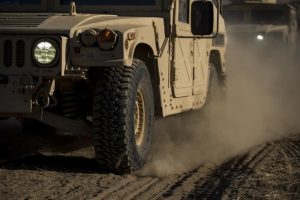
The Energy and Environment Cabinet Secretary Charles Snavely today announced the 2018 Kentucky Clean Diesel Grant Program, which will provide $275,689 for projects to reduce diesel emissions from aging school buses in the Commonwealth.
Funding is being made available through the federal Diesel Emission Reduction Act and the U.S. Environmental Protection Agency. This competitive program is open to all public school districts and private schools located in Kentucky.
“This program will help schools protect the health of our children by reducing diesel emissions and improving air quality,” Sec. Snavely said. “I encourage all of our school districts to apply for this funding.”
Kentucky public school districts and private schools that own and operate school buses are eligible to apply for funding through this grant program, which will reimburse up to 25 percent of the cost to replace a school bus. Grant recipients are responsible for the remaining 75 percent.
Kentucky school buses travel about 100 million miles each year, providing transportation for more than 350,000 children. Diesel exhaust can negatively affect children, who have a faster breathing rate than adults and whose lungs are not yet fully developed.
New buses emit up to 60 times fewer pollutants than those built before 1995, but budget restrictions often push bus replacement to the back burner.
“This program will provide additional resources that make it easier for school districts to replace older, more polluting buses with newer, cleaner ones,” said Department for Environmental Protection Deputy Commissioner Sean Alteri.
Proposals that achieve the most cost-effective emission reductions, and those that demonstrate the greatest emission reductions will be given priority in grant awards, as will applicants located in current or former non-attainment areas for ozone or particulate matter.
The purchase of new vehicles to expand the fleet is not covered by this program. Vehicles being replaced must be scrapped and rendered inoperable. Evidence of appropriate disposal, such as a photograph of the scrapped vehicle including serial number and VIN, will be required in order to receive grant funds.
The deadline to apply for funds is November 8, 2018. To apply, visit the Division for Air Quality’s web-site at http://air.ky.gov/Pages/CleanDiesel.aspx.


 The U.S. Department of Energy (DOE) recently announced a memorandum of understanding (MOU) with the U.S. Army to collaborate on the development of hydrogen and fuel cell technologies for military and civilian use.
The U.S. Department of Energy (DOE) recently announced a memorandum of understanding (MOU) with the U.S. Army to collaborate on the development of hydrogen and fuel cell technologies for military and civilian use.
 Educating firefighters and first responders is a top priority for the Kentucky Clean Fuels Coalition. Executive Director, Emily Carpenter, spoke at the Regional Traffic Incident Management Conference held in Florence, KY. The conference included first responders from Kentucky, Ohio, Indiana, and Michigan. Carpenter’s speech educated all attendees on alternative fuel and advanced transportation technologies on the road today. She highlighted how to identify the vehicles, safety information, and provided information on where to get more resources.
Educating firefighters and first responders is a top priority for the Kentucky Clean Fuels Coalition. Executive Director, Emily Carpenter, spoke at the Regional Traffic Incident Management Conference held in Florence, KY. The conference included first responders from Kentucky, Ohio, Indiana, and Michigan. Carpenter’s speech educated all attendees on alternative fuel and advanced transportation technologies on the road today. She highlighted how to identify the vehicles, safety information, and provided information on where to get more resources. 






